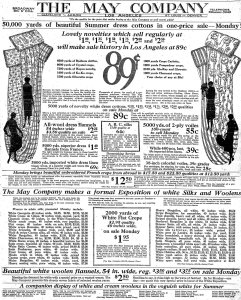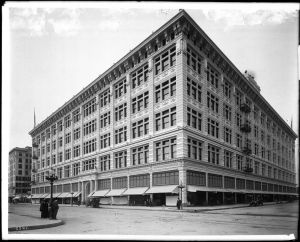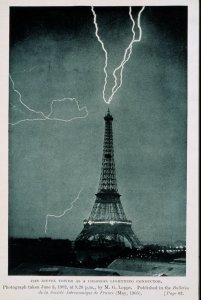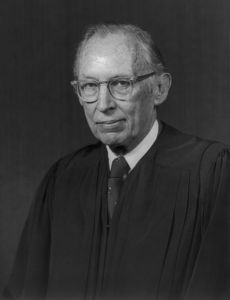
White, the dominant note in the season’s fashions! The cool, pure, fresh, tubable3 white, that will give such splendid service, and such satisfaction in this charming city of the Southland!
…
Trade and fashion journals have long predicted the vogue of white. Paris has acclaimed it! Los Angeles has accepted it! And the fad is on! Never could a fresher fashion predominate. White, with its cool freshness and Summery appeal, is particularly suited to Los Angeles, the great white spot of America.
You can’t make this stuff up, although really, who’d want to?

Just for kicks, we thought we’d estimate the chance that exactly one person on each of these boards would be an ethnic “minority” were they to be chosen randomly from the population of Los Angeles County. Assuming that there are 7,000,000 “minority” people, which is 71% of the population5, this probability is
 To put this in perspective, consider that the chance that an American will be struck by lightning in a given year is about 1 out of 280,000.6 This means that the chance of the same American being struck by lightning twice in the same year is about
To put this in perspective, consider that the chance that an American will be struck by lightning in a given year is about 1 out of 280,000.6 This means that the chance of the same American being struck by lightning twice in the same year is about . These are of the same order of magnitude. Essentially a random person is around half as likely to be struck by lightning twice in a year as the whiteness of these boards is to have happened by accident. In laymen’s terms: Not bloody likely.

In view of the heterogeneous population of our Nation, public respect for our criminal justice system and the rule of law will be strengthened if we ensure that no citizen is disqualified from jury service because of his race.
And you know, the same goes for BID Boards as long as they’re running little quasi-governments and hiring little quasi-police-forces and undermining “public respect for our criminal justice system and the rule of law” instead of minding their own BIDness. Maybe white was all the rage in 1925 but by now Los Angeles has rejected it! And the fad is off! It is particularly unsuited to Los Angeles, no longer the great white spot of America, thank the Lord.
- According to CNN in 2007, 71% of Los Angeles County residents were “ethnic minorities,” whatever that might mean in this context. We’re guessing it at least means “not considered white” by the media.
- Although what was meant by that is contested. The phrase is bandied about by present-day social critics as if it’s obviously a statement about race. That’s not so clear to us, although it’s certainly plausible. We don’t pretend to understand everything that goes on in 1925. The past, as they say, is a foreign country.
- We don’t know this word either. It’s not in the Oxford English Dictionary. Maybe it’s a white shibboleth. Or maybe it’s an idiosyncratic spelling of “tubbable,” which is in the OED and means “washable in a tub; suitable for laundering in a tub or (domestic) washing-machine.” This last seems most plausible.
- We’re not picking on these two BIDs in particular. The same is true of the Hollywood Media District BID, which doesn’t supply us with pix to link to.
- See CNN article linked to in note 1. The figures are from 2007, which hardly matters, we think.
- This is according to the National Lightning Safety Institute. It’s far too high for our comfort! We gotta get one of these things here!!
Image of May Company advert is either in the public domain if the copyright wasn’t properly renewed, or else we’re asserting a fair use right to reproduce it here. Image of the Hamburger’s Store building (later the May Company) in public domain and appears courtesy of the University of Southern California. The image of lightning striking the Eiffel Tower is in the public domain and appears courtesy of the National Oceanic and Atmospheric Administration. The image of Lewis Powell is in the public domain as a work of the U.S. Government, although we got it from Wikimedia here.
